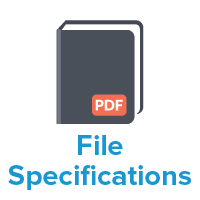Hardcover vs. Softcover
When deciding how to bind a book or novel that you put your time into, the thought of having to pick out a hard or softcover can be extremely daunting. Especially when you have put so much hard work into creating your book. What will it cost? Will this type of cover look and feel good to my readers? These are some of the thoughts that may be swimming through your mind as you go through the process. Have you ever thought as to why some are printed on hardcover, and some on softcover? The answer is not simply aesthetics!
Hardcover
Picture this: you have been waiting for one of the most anticipated books of the year. When you finally pick it up at your local bookstore the crisp hardcover stands out with beautiful artwork and title inlays. When a very popular book first hits the market, you can bet it will be on a hardcover. It is usually not released in a softcover version until a few months afterwards. Books of high value or popularity are often bound in hardcover, as it not only protects the novel by preventing the pages from bending outwards, but allows for extra touches like inlays in the title, special gloss, raised letters, and can make the cover art more intense.
It is the more expensive option, so it is important to consider your audience. If your readers are avid collectors with pristine bookshelves, you can bet they’ll want a hardcover to line up beautifully on the shelf, perhaps matching with the editions they have already. Do note that hardcovers can be more cumbersome in travel, as they do not always fit as nicely in luggage or have flexibility like a softcover. As well, being a hardcover, it may not provide as much comfort to your hands while reading, though it can at times be easier to lay open flat. Overall, the quality and longevity of a hardcover, the fact it matches with the other books in the edition, and the ability to make the cover more striking, are the main selling points of this option.
Softcover
Light and portable, the softcover is the most produced cover option between the two. It is also the most economical, so if you’re on a budget, printing softcover can save you quite a bit of cash, especially if you are printing large quantities of your book. Self-publishers getting their first book printed and published often use softcover for its cost effectiveness. One of the most notable qualities of a softcover is its appeal to travelers. When travelling, the flexibility of a softcover will allow for easy reading while sitting on an airplane, or on the go, due to its bendy, floppy cover. It will also feel more comfortable in your hands while reading in general; whether it be at home, on the bus, etc. They are very difficult to lay flat, however.
Corporate printing projects often utilize softcover due its low cost, and the ability to print multiple copies to make it more widespread. Imagine if everyone in the office had to have a hardcover of a simple manual, the cost would be immense for the company, and they would be overall more cumbersome. Though it may not as be as fancy and striking as the hardcover option, the comfort while reading coupled with its cost effective printing options can make for a great cover option for your book. It also can be made to last, provided the owner cares for the book over the years.
So now that you know the difference between and hard and softcover, which one will you choose? Don’t get too nervous! The contents of your book will ultimately be the closing tool for your readers, after all.
Submitted by Emilia Vieni. Janurary 21, 2021







